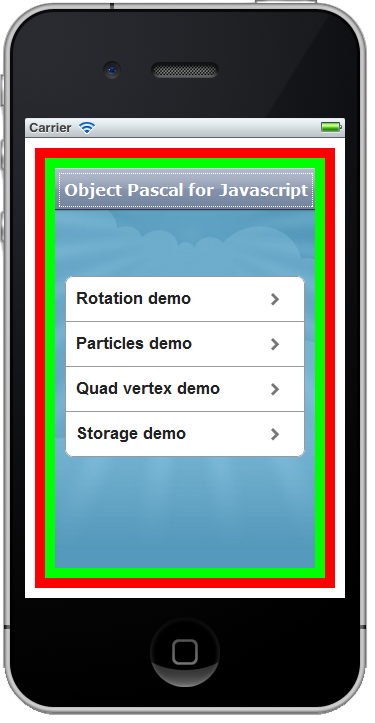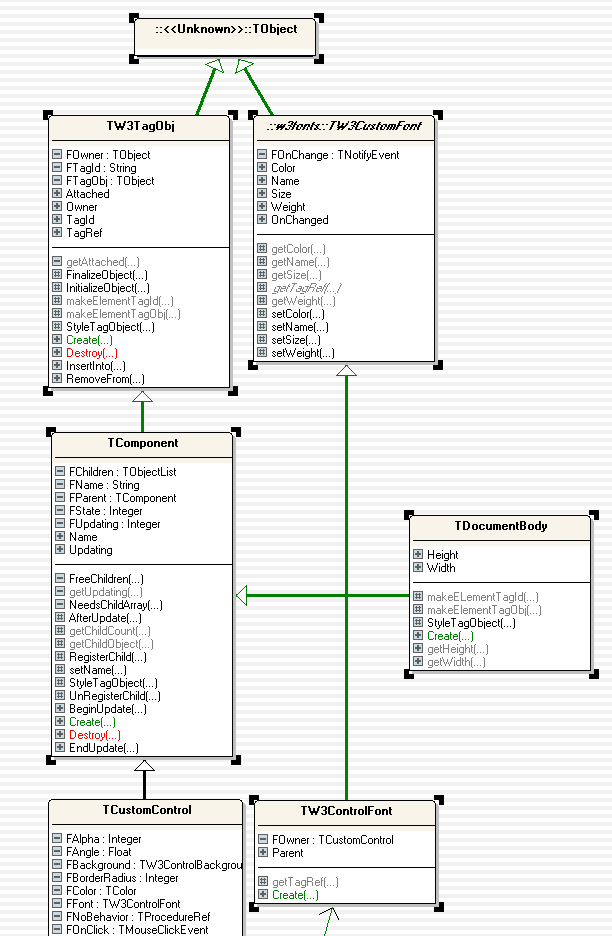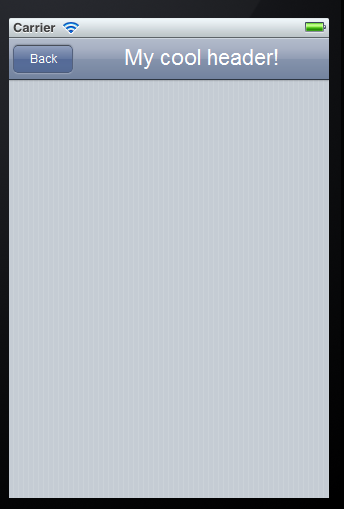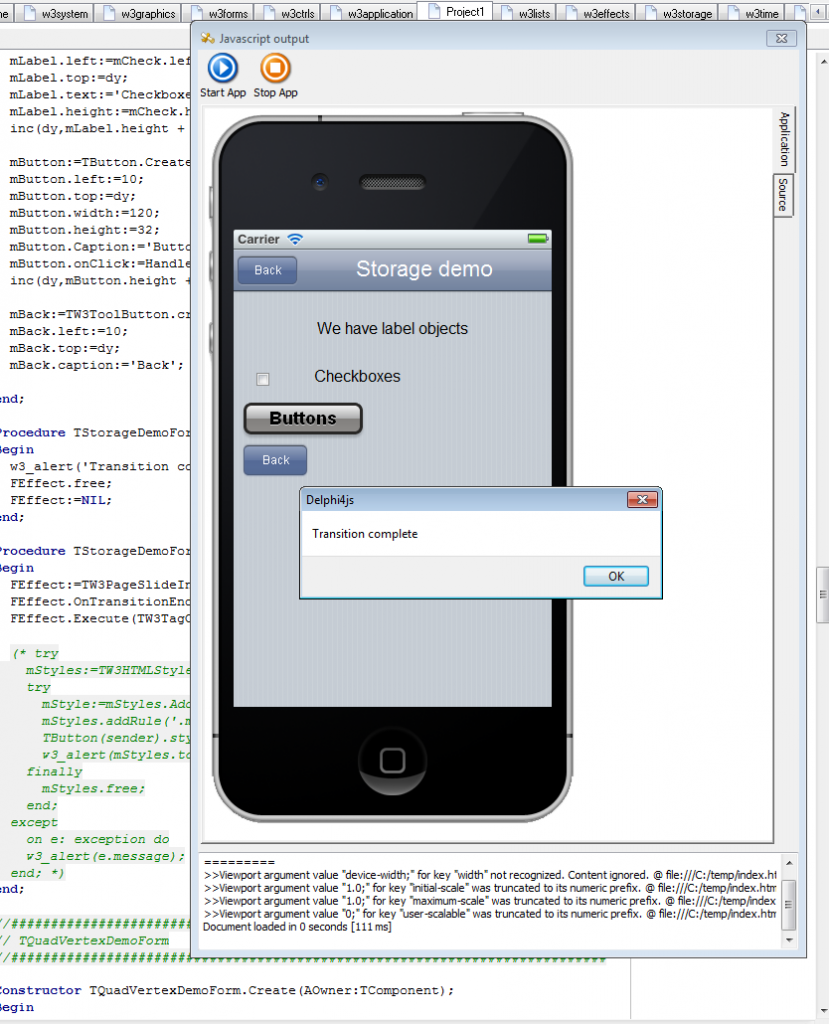Working with hardware accelerated webkit animations under vanilla Javascript can be daunting. First of all it takes a while to understand the interrupt driven nature of the webkit engine (or “trigger” based is perhaps a more familiar word to us Delphians) and secondly because there are actually two types of animations (transitions), explicit and non-explicit (animations), which adds to the complexities.
Under OP4JS we have started out by supporting animations only, which basically means that you can trigger a pre-defined animation using either TNamedAnimation or any of our ready-made animation classes. If you wish you can trigger non-explicit animations (or transitions) as much as you like, but you will have to set the tag properties and css values yourself. The heart of our animation system resides in the W3Effects.pas file that is going to ship with the RTL – and you can expect it to grow once we start to issue updates and service packs.
Let me show you how easy it is to setup a hardware acellerated animation and play it:
[sourcecode language=”delphi”]
Procedure TForm1.HandleEffectDone(Sender:TObject);
Begin
TW3NamedAnimation(sender).free;
end;
Procedure TForm1.MoveHeader;
Begin
FEffect:=TW3NamedAnimation.Create;
FEffect.AnimationName:=’HEADER-MOVE’;
FEffect.Duration:=0.80;
FEffect.ExecuteEx(FHeader,NIL,HandleEffectDone);
end;
[/sourcecode]
And in our CSS file we define our animation (this will be automated in a future version of OP4JS):
[sourcecode language=”CSS”]
@-webkit-keyframes HEADER-MOVE {
from {
left: 100%;
top: 0px;
} to {
left: 0px;
top: 0px;
}
}
[/sourcecode]
Voila. That’s all it takes to make a control references by FHeader (or any control you want) to fly across the top of the screen using hardware acceleration (when available, not all platforms supports it directly and resort to software).
Keep it simple
It’s easy to go overboard with effects like this so try to keep in mind that every phone model is unique and have different performance levels. I am currently using 2 hardware accelerated “movers” to navigate between forms, and the difference between the iPhone 3GS and 4G is quite dramatic. It seems 3GS does not support hardware unless your control is placed directly on the document. So while it’s easy to spin things around – we must be prudent in when we use these things. Nothing is worse than an app where the effects get in the way of the actual substance.







